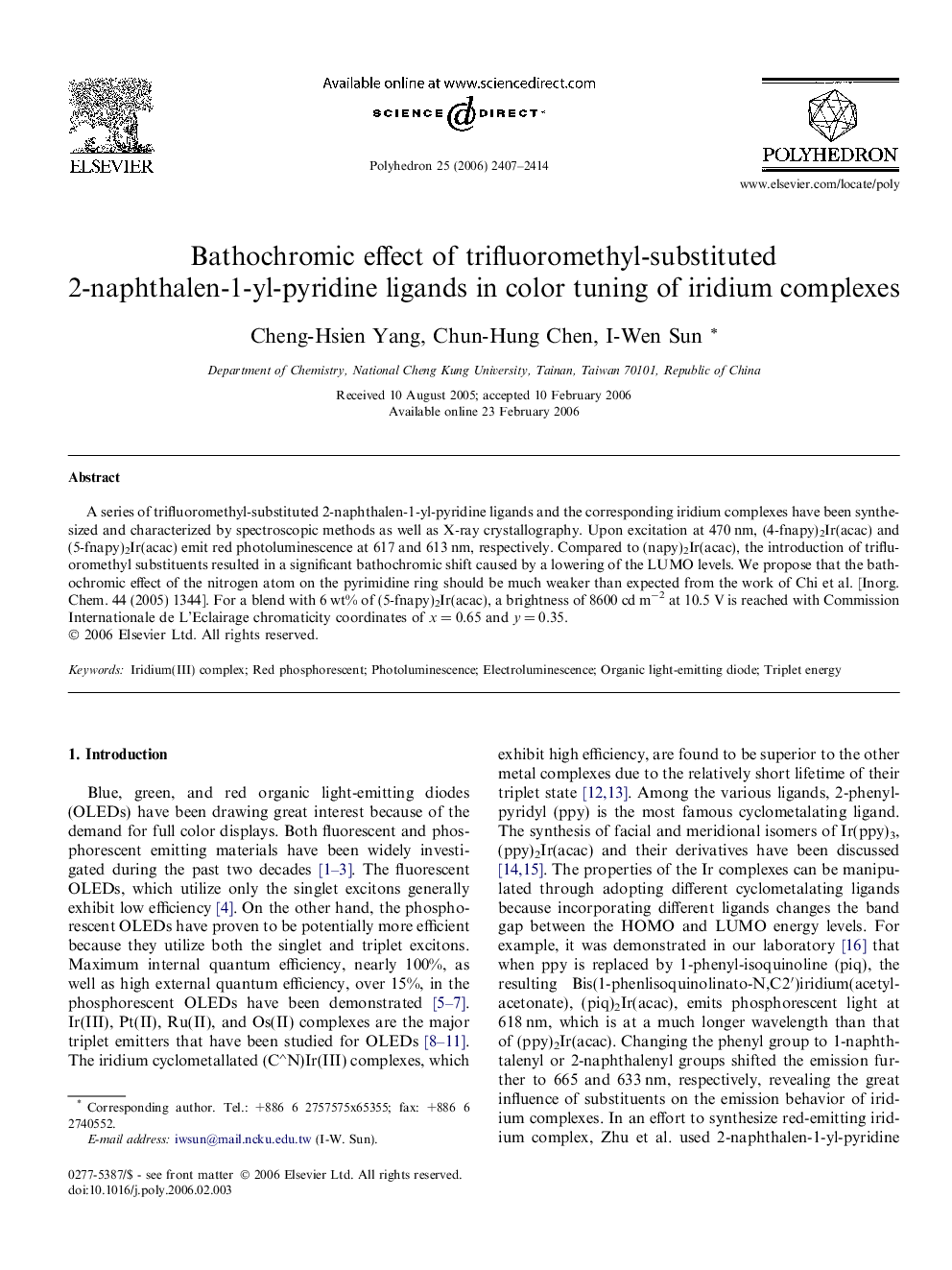| Article ID | Journal | Published Year | Pages | File Type |
|---|---|---|---|---|
| 1340548 | Polyhedron | 2006 | 8 Pages |
A series of trifluoromethyl-substituted 2-naphthalen-1-yl-pyridine ligands and the corresponding iridium complexes have been synthesized and characterized by spectroscopic methods as well as X-ray crystallography. Upon excitation at 470 nm, (4-fnapy)2Ir(acac) and (5-fnapy)2Ir(acac) emit red photoluminescence at 617 and 613 nm, respectively. Compared to (napy)2Ir(acac), the introduction of trifluoromethyl substituents resulted in a significant bathochromic shift caused by a lowering of the LUMO levels. We propose that the bathochromic effect of the nitrogen atom on the pyrimidine ring should be much weaker than expected from the work of Chi et al. [Inorg. Chem. 44 (2005) 1344]. For a blend with 6 wt% of (5-fnapy)2Ir(acac), a brightness of 8600 cd m−2 at 10.5 V is reached with Commission Internationale de L’Eclairage chromaticity coordinates of x = 0.65 and y = 0.35.
Graphical abstractThe iridium complexes, (4-fnapy)2Ir(acac) and (5-fnapy)2Ir(acac), were prepared and their X-ray crystal structures were determined. Compared to Ir(napy)2(acac), the introduction of trifluoromethyl-substituted ligands resulted in remarkable bathochromic effect. The trifluoromethyl group has a stronger influence on lowering the LUMO levels.Figure optionsDownload full-size imageDownload as PowerPoint slide
